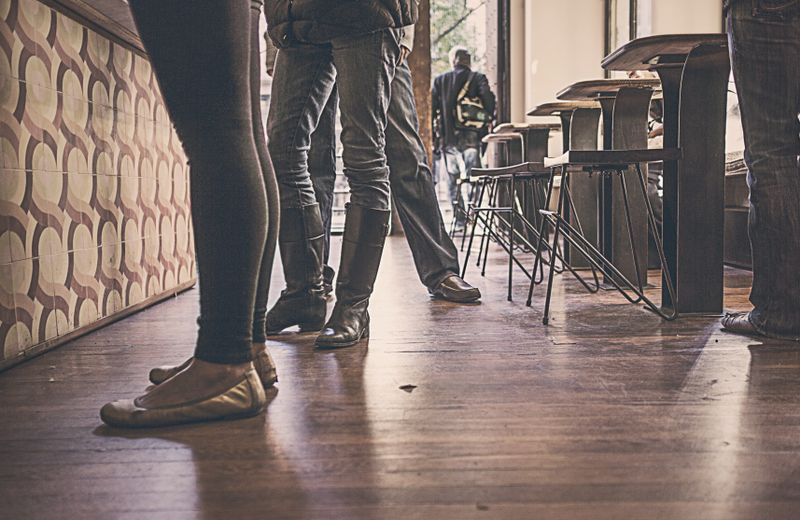Bursitis occurs when the bursa inflamed. Normally, the bursa sac is saturated with lubricating liquid and keeps tissues from rubbing against each other. Some of these tissues can be bone, muscle, skin, or tendons. When they rub against each other, it causes friction, which in turn causes irritation.
It’s most commonly caused by overuse. It can also come about through a serious injury. However, it is most commonly associated with age. When you grow older, your tendons also age, and this makes them unable to deal with stress easier. They also become less elastic, which means less flexible, and thus prone to easier tearing.

Overuse and injury can lead to bursitis, particularly if the damage is done to the joint. Activities such as gardening, carpentry, throwing, skiing, shoveling, pitching, painting, scrubbing, golf, tennis, incorrect posture, poor stretching before exercise or even poor conditioning before exercise can lead to a sharp increase of risk of developing bursitis.
1. Arm Pain
Arm pain is usually concentrated around the shoulder area. The rotator cuff, especially, is the main target of inflammation by becoming swollen and stiff. Normally, the bursa separates the tendon from the bone and deltoid muscle, but when inflammation sets in, there’s no longer anything keeping that tendon from rubbing against the bone and muscle. Because of that, you receive a limited range of motion with your shoulder and arm as well as some acute pain. Sometimes the pain is actually at its worse in the nighttime hours. Tenderness and stiffness also occur in certain areas of the shoulder, too.
Besides pain in the shoulder, bursitis is often accompanied with tendinitis, particularly in the tendons that sit close to the bursa. When these tendons are flexed, for example, if you extend your elbow, then you may experience a sharp pain that can be described as pinching. To remove this form of bursitis, doctors have to remove the fluid in the bursa sac. They do this by draining it with a syringe, and then the sample is sent to a lab to determine if the liquid is infected or if the inflammation is a cause of stress done to the body.
2. Elbow Pain
Although you may think that the shoulder may be the most common place for inflammation, it is actually the elbow. This is because the bursa located in your elbow is often able to receive the most trauma. Surely, you can remember a few times where you accidentally bumped your elbow into something rather painful? Since you use your elbow so frequently as well, and often in repetitive motions like swinging a golf club or bat or raking or painting, this increases the building inflammation within the elbow, providing some acute pain, especially when you bend your elbow and cause swelling.
3. Hip Pain
If you like to run, you may have problems with your hip later on. The bursa located in the hip area sits close to your hip joint and is the largest bursa in your body. Pain occurs down the front and middle of the thigh area, all the way down to the knee, and this pain can increase when the hip is extended. Sometimes tenderness in the groin is also felt, and you may even fell a small mass form similar to a hernia. If your nerves are being compressed by the bursa, it can lead to a tingling sensation.
4. Joint Pain
Because bursae are usually located extremely near a joint, you can usually experience a great deal of joint pain. If you do feel some acute pain in your joints, this may be one of the signs that you’re suffering from bursitis. Along with pain, your joint may also be red or swollen. They may feel warm. The inflamed joint may also make you limp or the joint can lock up entirely, preventing you from being able to move that joint either easily or at all as it limits the range of motion. You may also feel as though you’re weak.
5. Stiffness
One of the most common signs of bursitis is stiffness. Particularly that of the joint, although you may only notice it just from the area that you’re trying to move. Stiffness, in itself, is the sensation of having difficulty in moving a specific part of your body, be it arm, leg, hip, et cetera. It often is accompanied by pain or tenderness. Because bursitis tends to lock up joints, this could be the cause of the stiff feeling that you’re experiencing. It can also come about due to injuring the joint or surrounding area which means it may be inflamed.
6. Swelling
When inflammation occurs in the bursa, it can cause the joints to swell. This may become noticeable, either visually or just through sensation. Pain, redness, and warmth may also accompany swelling, either of the joint itself or the surrounding area. Injury can also cause joints to swell up, either if the joint itself is injured or some of the structures close to the joint. Often, feeling as though you’re stiff goes along with the sensation of swelling. With this symptom, you may not be able to move that specific limb as easily or at all, since swelling disrupts movement ability.
7. Tenderness
Tenderness refers to a dull pain in a certain area. If it’s felt near a joint, then you may be suffering from bursitis. Sometimes, applying pressure to the area can cause the pain to worsen. Usually, if you’re performing some active movement or exercising, and you begin to experience it in a certain part of your body, one that is steadily increasing the more you perform that action, then it is likely that the bursa is becoming inflamed. Pain, along with the other symptoms described above, can accompany it, too. Resting or holding ice to the area might relieve it.